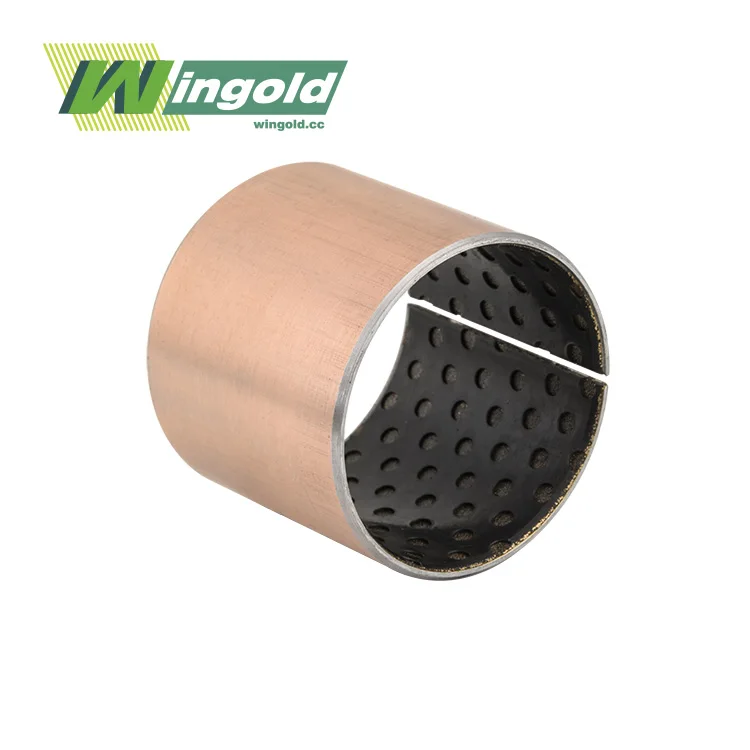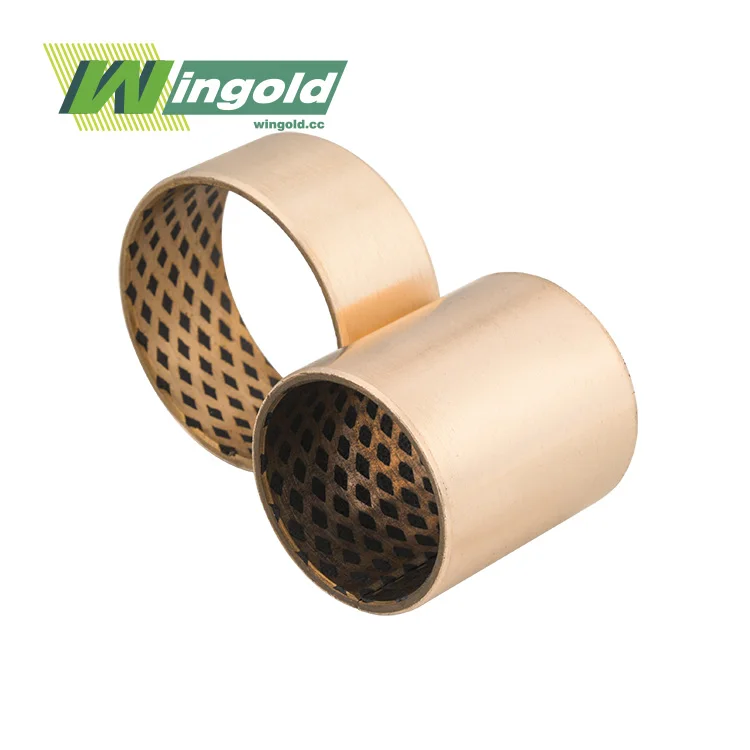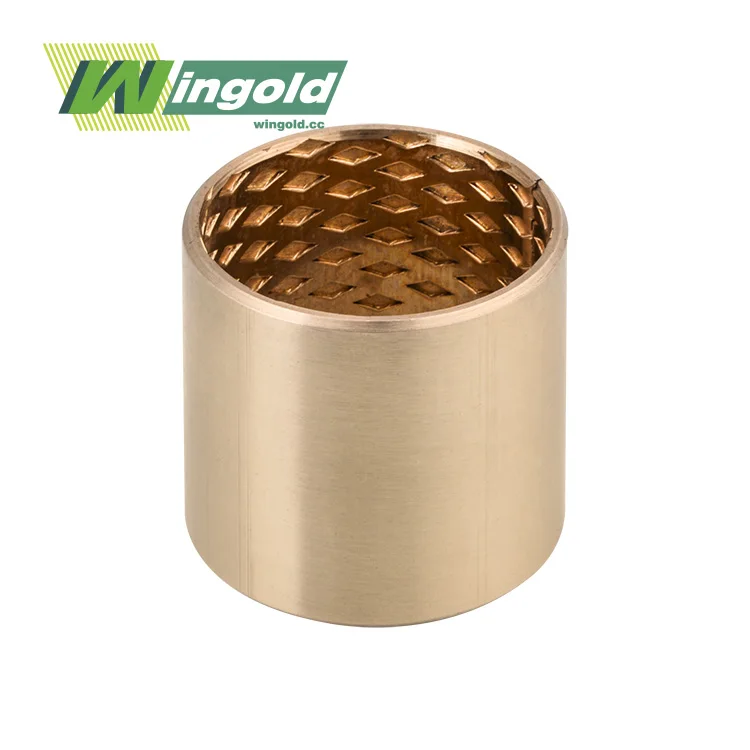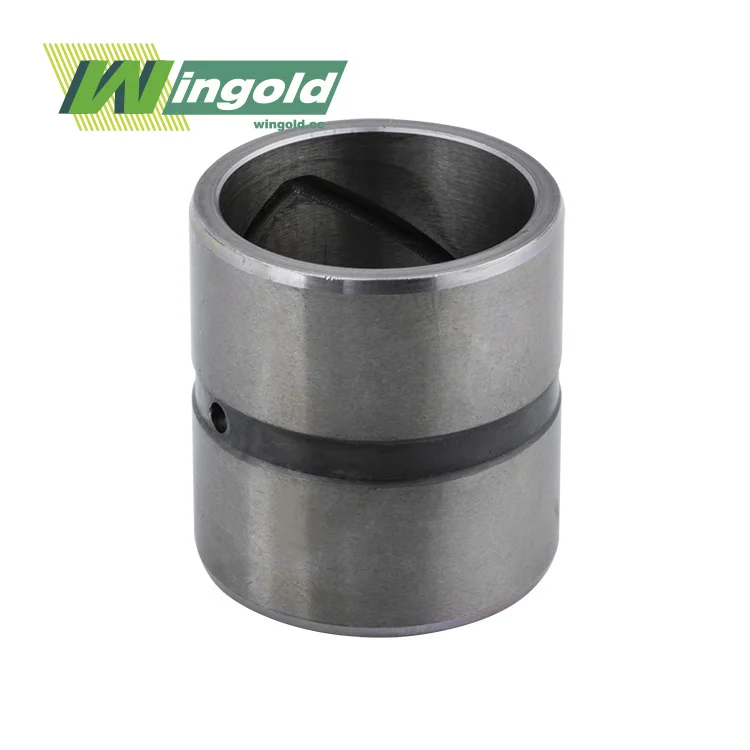
Grasping Clearance in Bronze Plain Bearings
Clearance in bronze plain bearings refers to the space between the bearing's inner diameter and the shaft. This gap is essential for several reasons:
Types of Clearance
Bronze plain bearings are designed with two essential types of clearance that directly affect their performance: radial and axial. Radial clearance refers to the space between the bearing’s inner surface and the shaft, which ensures smooth rotation, reduces friction, and accommodates thermal expansion during operation. If the clearance is too tight, excessive wear and heat generation may occur, while excessive clearance can cause vibration and instability. Axial clearance, on the other hand, is the allowance for movement of the shaft along its axis, preventing binding and compensating for alignment variations. Together, these clearances enable optimal lubrication, minimize wear, and ensure reliable, long-term operation in demanding applications.
Importance of Proper Clearance
Adequate clearance in bronze plain bearings is vital for several reasons:
- Lubrication: Proper clearance allows for the formation of a consistent oil film, reducing friction and wear.
- Thermal expansion: Clearance accommodates thermal expansion of materials during operation, preventing seizure.
- Load distribution: It enables even distribution of loads across the bearing surface, enhancing load-bearing capacity.
- Debris accommodation: Sufficient clearance can accommodate small debris particles, preventing premature wear.
Factors Affecting Clearance
Several factors influence the optimal clearance for bronze plain bearings:
- Operating temperature: Higher temperatures require increased clearance due to thermal expansion.
- Load conditions: Heavier loads may necessitate tighter clearances for better load distribution.
- Shaft speed: Higher speeds often require larger clearances to maintain proper lubrication.
- Lubricant viscosity: Thicker lubricants may require larger clearances for effective oil film formation.
The Role of Fit in Bronze Plain Bearing Performance
Fit refers to the relationship between the bearing's outer diameter and the housing bore. Proper fit is crucial for optimal bearing performance:
Types of Fits
There are three main types of fits for bronze plain bearings:
- Clearance fit: The bearing's outer diameter is smaller than the housing bore, allowing for easy assembly and disassembly.
- Interference fit: The bearing's outer diameter is larger than the housing bore, requiring press-fitting for a tight, secure installation.
- Transition fit: A compromise between clearance and interference fits, providing a balance between ease of assembly and stability.
Impact of Fit on Performance
The chosen fit significantly affects bronze plain bearing performance:
- Stability: A proper fit ensures the bearing remains stable during operation, reducing vibration and misalignment.
- Heat dissipation: Good contact between the bearing and housing promotes efficient heat transfer, preventing overheating.
- Load distribution: The right fit ensures even distribution of loads across the bearing surface and into the housing.
- Retention: Proper fit prevents bearing rotation within the housing, maintaining alignment and reducing wear.
Selecting the Right Fit
Choosing the appropriate fit for bronze plain bearings depends on several factors:
- Application requirements: Consider load, speed, and operating conditions when selecting the fit.
- Housing material: Different materials may require specific fits to account for thermal expansion differences.
- Maintenance needs: Consider ease of assembly and disassembly for maintenance purposes.
- Precision requirements: High-precision applications may necessitate tighter fits for improved accuracy.
Optimizing Clearance and Fit for Enhanced Performance
To maximize the performance of bronze plain bearings, it's essential to optimize both clearance and fit:
Precision Manufacturing
Achieving optimal clearance and fit begins with precise manufacturing processes:
- Advanced machining techniques: Utilize CNC machining and other advanced technologies for tight tolerances.
- Quality control: Implement rigorous quality control measures to ensure consistent bearing dimensions.
- Material selection: Choose high-quality bronze alloys that maintain dimensional stability under various conditions.
Application-Specific Design
Tailor clearance and fit specifications to the specific application:
- Load analysis: Conduct thorough load analysis to determine optimal clearance and fit for given operating conditions.
- Thermal considerations: Account for thermal expansion in both the bearing and surrounding components.
- Lubrication requirements: Design clearances that promote effective lubrication based on the chosen lubricant and method.
Regular Maintenance and Monitoring
Ensure ongoing optimal performance through proper maintenance:
- Periodic inspections: Regularly check clearances and fits to detect any changes due to wear or other factors.
- Lubrication management: Maintain proper lubrication to prevent excessive wear that could affect clearances.
- Temperature monitoring: Keep track of operating temperatures to ensure they remain within design parameters.
Conclusion
The importance of clearance and fit in bronze plain bearing performance cannot be overstated. These critical factors directly impact a bearing's ability to function efficiently, reliably, and durably across various industrial applications. By understanding the nuances of clearance and fit, engineers and maintenance professionals can optimize bearing selection, installation, and maintenance practices. This optimization leads to improved machine performance, reduced downtime, and lower operational costs. For expert guidance on selecting and implementing the ideal bronze plain bearings for your specific needs, contact Wingold Bearing at info@wingold.cc. Our team of specialists is ready to help you achieve peak performance in your applications.
FAQs
How does clearance affect lubrication in bronze plain bearings?
Proper clearance allows for the formation of an adequate oil film, ensuring effective lubrication and reducing friction between surfaces.
What are the consequences of incorrect fit in bronze plain bearings?
Incorrect fit can lead to premature wear, increased friction, reduced load capacity, and potential bearing failure.
Can clearance and fit be adjusted after installation?
While minor adjustments may be possible, it's crucial to select the correct clearance and fit during initial design and installation for optimal performance.
How often should clearance and fit be checked in bronze plain bearings?
Regular inspections should be conducted as part of routine maintenance, with frequency depending on the application and operating conditions.



